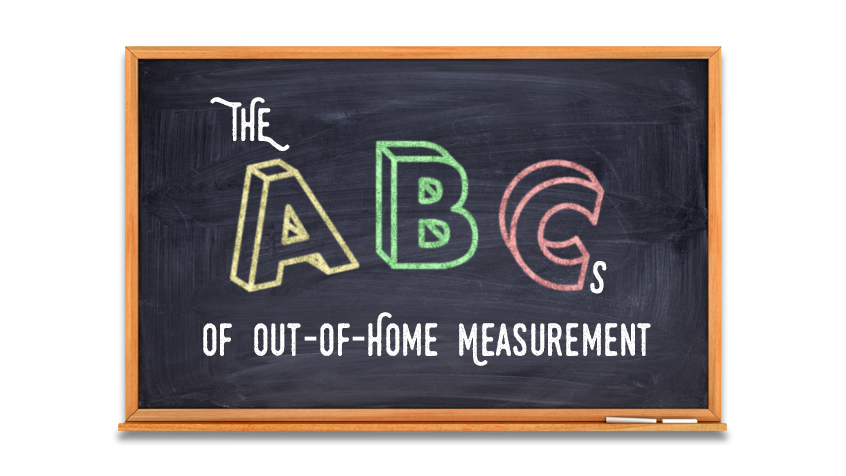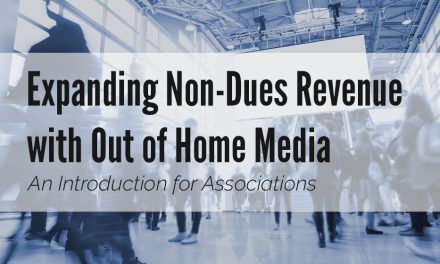For advertisers and marketers, data is our life-blood. It guides every strategic decision we make. We spend countless hours tracking, gathering, understanding, and interpreting it. Even in the early days of advertising when newspapers were the only available medium, buyers understood the basic premise that the newspaper that could demonstrate the highest readership could offer the best advertising space. So, the most read newspaper could give brands visibility beyond their traditional reach and an edge on their competitor. In today’s market, as virtually every company is advertising and utilizing most or all media, brands and planners must understand and capitalize on data to find ways to differentiate themselves.
The value of data measurement in Out of Home advertising is that it allows us to determine what audiences are being reached, and where and how they are being reached. It’s no secret that Out of Home has struggled for many years against media that was able to provide more specific, granular measurement. The development of OOH measurement tools began at the elementary stages and grew to become more sophisticated over time.
It reminds me of the way a child makes their way through grade school, high school, college and eventually into the working world, all along learning and developing new skills. We’ve seen data measurement tools start at the most basics level and develop in complexity. As much as we obsess over Out of Home data every day, we also recognize it might not be front of mind for everyone, and you may need a refresher course. Grab your permission slip and sack lunch and join me on this journey of the maturation of data measurement!
Kindergarten – Data Measurement “DECs” and 123s
Out of Home data measurement began in the simplest of terms. We were literally counting the number of cars that drove by each billboard location. This delivery method was called Daily Effective Circulation numbers (DECs). In a centuries-old form of advertising, having an established method for measurement of billboards was cause for celebration in the industry. Planners had the ability to manipulate these numbers to support their media plans and prove performance. However, when it came to knowing how many people were actually seeing the advertisements, and who they were, this method fell short.

The earliest attempts at measuring outdoor advertising were on par with the early OOH media.
Elementary School – OOH Ratings Still in its Primary Stage
Out of Home Ratings, previously known as Eyes on Impressions, provided a more accurate picture of how many people were likely to notice an advertising space. This method factored in traffic counts and offered some basic information about who may have been passing by. This method was later reinforced by the Visibility Adjustment Index, which considered factors like size, location, distance from road, and angle of the ad space. Census and trip survey data were also layered in to provide some insight into the demographics of those travelers. Finally, a reach and frequency model based on trip origins and destination, was incorporated to give planners more detailed reporting.
This was a huge leap forward in our ability to strategically plan OOH, with a more accurate measurement system that agencies and brands could take seriously. This gave OOH media planners a more level playing field with the more established, traditional media formats. Planners could justify OOH in their overall plans with a more accurate count of likely-to-see impressions, and not an overinflated number of cars and pedestrians walking by. More importantly, impressions data could be segmented to reflect target audience reach and frequency. Planners could then answer the most pressing questions: What percentage of my target audience am I going to reach? and How often am I going to reach them?
Middle School – The Cool Kids Use TRPs
The next major progression was an accurate weekly OOH impression numbers that could be presented as general population impressions or targeted impressions for a specific audience. Not only did this qualify OOH to be considered among the other traditional forms of media, but we were about to accelerate to the top of the class. We began using daily and weekly Targeted Rating Points (TRPs) and were no longer beholden to monthly Gross Rating Points (GRPs). TRPs were data that could be seamlessly incorporated into overall media plans and summarized alongside traditional media formats for overall campaign delivery. We could show in detailed numbers what we knew OOH was able to do all along—enhance, support and amplify advertising on TV, radio, digital and print. Out of Home was no longer just a groupie to the cool kid in school—the data made a stronger case for OOH as a standalone medium for both geographically and demographically focused campaigns.
High School – Overcoming the Awkward Years with Audience Targeting
Over the years, we felt growing pains with the changes from one measurement tool to the next: DECs to weekly OOH impressions, monthly GRPs to weekly and daily TRPs, etc. We fumbled a bit with new showing-level metrics, suffered decreased (however, more accurate) impression numbers, and had to adapt to weekly versus monthly planning and comparing historic plans to current plans.
Then, like a high school senior finally hitting their stride, OOH media plans became audience specific and more targeted. Proven ad delivery resulted in higher spend growth, OOH was winning a higher percentage of media plan dollars, and our storytelling capabilities became stronger. On top of it all, we discovered life after high school was about to get even better.

Post-Graduate Studies – Data Measurement Elites
With the rollout of Geopath’s Insight Suite coming later this year, the lesson plans on data measurement are about to change. We’re skipping our undergraduate and heading straight for a PhD! The huge growth in marketing data that is becoming available from consumers mobile devices has made it possible to create a whole new system of measurement for OOH. Out of Home planning will no longer only be focused on counting traffic for the media, but will shift to delivering audiences and the media that will reach them. Ratings will no longer just look at where an audience segment lives, but where they go during the day. We will soon have the ability to deliver a hyper-targeted message to the right person, in the right place, at the right time—down to the hour!
Here is just a peek of what we expect Insight Suite to provide Out of Home planning:
- More accurate targeted impression numbers. Mobile and GPS data will provide exponentially more accurate impression counts for target audiences and plan delivery.
- Audience composition. Not only will we have more accurate impression delivery counts, but we will know more about that audience. This will include consumer behavior based knowledge (i.e. buying patterns and habits).
- Travel details. The tools will allow for message delivery where our consumers live and work, and throughout their daily travel in the market.
- Impression measurement. Weekly impressions will be surpassed by seasonal, monthly, daily and hourly targeted impressions per ad space.
Geopath’s new tool will transform Out of Home for everyone from planners and strategists to brand marketers and creatives. We’ll all have an opportunity to become more expert in understanding the reach of the field than ever previously thought possible. And with a laser-focus on target audiences, the opportunities for multiple and specific storytelling and creative messaging are seemingly boundless.
[bctt tweet=”The huge growth in marketing data available from mobile devices has made it possible to create a whole new system of measurement for OOH ” username=”emcoutdoor”]
The acceleration of data measurement in Out of Home over the past decade has given us the confidence and support to defend the long-held claim that OOH advertising will continue to improve and is absolutely necessary to the marketing mix. Just like a graduation celebration, there is a lot the Out of Home industry has accomplished to this point and of which it should be extremely proud. As an industry, we have grown leaps and bounds with the measurement and planning tools made available.
We have come a long way since the days of counting on our fingers and being a geographically-focused advertising medium. The possibilities ahead of us to capture audiences along their journey, delivery real time and relevant advertising and tell a custom and creative story are endless.
Oh, the places we’ll go!
If you’d like to get your team up to speed on Out of Home measurement, and what the future looks like stop by our homeroom for a class:





